
The Canadian news is flooded with discussions about pipelines and where they should or shouldn’t be built. So, how do we address the multiple perspectives of different issues in the classrooms? It’s important to be impartial while presenting all the facts from both sides of the issue.
Many of our students have family members who work in the oil industry and many have parents who work closely with Indigenous People and environmentalists. When these issues are so hotly contested in the media, how do we teach students to listen to all perspectives and form opinions based on facts (especially in light of how many people are unable to look past bias)?
Talk About Point of View
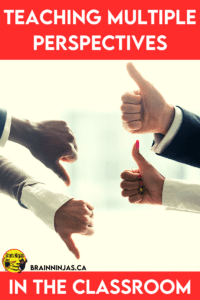
A very simple activity that can be done in a classroom is teaching that people will see something from their point of view. Divide your students into two groups and have each group stand on a different side of the classroom.
In the middle of the room, hold up a piece of paper. On one side of the paper, write the number eight and a numerical symbol. On the other side of the paper, write the word eight. When you hold up the paper, each group of students should only be able to see one side of the paper. Make sure you use a piece of paper that is thick enough that students won’t see the other side when it’s held up to the light.
Ask students what they see. They will both say eight. Ask them questions to clarify the details. For example, do they see numbers or letters? It will be different.
Both sides are right because both sides see something different.
Most issues are like this; you can only see one side until you intentionally look for the facts on the other side of the matter.
Turn the paper over. Show students that both sides are right, but knowing what the other side sees is important, too.
Stick to the Facts
Collect information from a wide variety of sources, but show students how to figure out whether or not a source is reputable. There is a lot of information that can be found online today, but anyone can print anything online without having to show facts or accuracy.
Books often have to prove their sources are accurate through a vetting process, so when information is found in a book published through a mainstream publisher, the information can be viewed as facts. However, books are only as good as the most recent information on an issue. They don’t get updated, so sometimes they can have false information just because they are out of date.
Issues that are being discussed in the media are a great way to talk about the two perspectives but stick to the facts of the case instead of the emotions they cause.
Show Both Sides
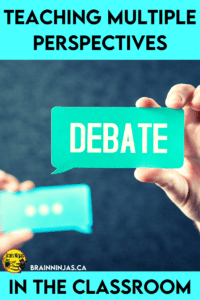
It would be irresponsible to talk about any issue without talking about both sides. That does not always mean the pros and cons of an issue. When dealing with issues that specifically impact the lives of humans through racism, oppression, colonization or genocide, the two sides are the two opposing groups of people, not the positives and negatives. Do not debate the pros and cons of a serious historical event like the Holocaust.
Save the positives and negatives for human lives are together on the same side. For example, debating whether or not plastic bags should be banned is an issue where you can debate the pros and cons.
We created a product that introduces all sides of the pipeline issue. It’s not meant to have students create an opinion, but to learn to listen to a variety of perspectives. Sometimes when we feel passionately about an issue, it’s difficult to hear the other side. Even as teachers, we have to be careful to not influence the opinions of our students. We need to teach students to listen and evaluate multiple perspectives, disagree respectfully and back up their opinions with facts rather than other people’s opinions.
Keep Your Opinion to Yourself
It can be difficult to keep your own bias and opinion to yourself. In fact, you might not even be aware of your own bias when discussing issues.
It is much easier to keep historical events in check because you are far removed from them, but for more current events, particularly those that are emotionally charged, it can be more difficult.
But it is important to stay impartial. Your role as the teacher is to facilitate the conversation but not impose your values or beliefs on the matter.
That said, if a conversation becomes overtly racist or inappropriate, it is your job to stop the conversation and educate your students on why the discussion is off track.
For non-negotiable wrongs of the past like Residential Schools or the Holocaust, your opinion is irrelevant because these matters were inhumane. That is a fact. It is not an opinion.
Debate Little Things to Learn to Debate Big Things
Start small.
Teach your students how to listen to all the information about an issue before forming an opinion or taking action on an issue.
Have discussions about little things to learn about to listen to others and present an argument that supports their position.
Here is a list of topics we have discussed and debated in our Grade Four and Grade Five classrooms:
- which colour of Smarties tastes the best?
- should plastic straws be banned?
- should everything in school be paperless?
- which brand of cookie is the best?
- should dance be taught in gym class?
- what snack is best to take on a field trip?
- should pets be allowed at school?
Teach Students to Argue the Issue With the Actual Issue
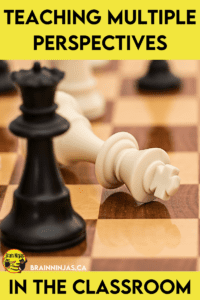
Nothing makes a ninja’s blood boil when you are discussing one issue and someone reciprocates with a completely unrelated issue.
For example: Using plastic straws is a waste of resources because they can only be used once. Instead, people should use paper straws that can be recycled or metal straws that can be reused.
The argument from someone in my family: When I had babies, we used cloth diapers. All you moms with your disposable diapers are the problem.
So, while the diaper issue is important, that wasn’t the debate.
Teach your students to stick to the facts and issues specifically related to the debate.
Teach Students it’s Okay to Change Your Mind
One of the most difficult things for adults to do is change their minds about an issue. It is possible, but some people are more likely to change their minds than others.
It comes down to having a growth mindset. Let’s be honest; there are some people who are not able to learn from their mistakes. They continue to make the same bad choices over and over again.
These people often struggle with a fixed mindset because they see changing their minds as a weakness. But, having a growth mindset allows a person to recognize they now have more information and, therefore, can make a more informed decision.
And it’s ok to change your mind. Particularly if you didn’t have all the information when you started.
Try This Multiple Perspectives Activity
Here is a quick activity we do to show students that something that seems like a black-and-white, clear-cut issue can quickly turn grey.
Ask your students to put their heads down so they cannot see anything. For each of the questions, students will raise their hand for yes and keep their hands down for no. It is important to just watch the hands, but not call out any student for any of the questions. You might want to count the hands and keep a tally but do not identify any students or show surprise at any point.
Start the Questions Here
Start with a simple phrase: Is it wrong to steal something from a store? It is likely most of your students will raise their hands.
Next question: Is it wrong to steal something that doesn’t cost very much from a store? You will likely have most people keep their hands raised.
Next question: Is it wrong to steal food from a store if someone doesn’t have the money to buy it? This is where we found a few less hands, but this will depend on your student’s personal experience.
Next question: Is it wrong to steal medicine from a store for a sick relative if no one sees the person stealing it? Now it will get more difficult for people to decide.
Next question: Is it wrong to steal medicine for a sick child from a store if the person stealing it would not get caught?
Last question: Is it wrong to steal medicine for a baby that will die if they don’t get it and the person stealing it will not be punished?
It is likely that some of your students had trouble deciding for some of the questions because we’re humans who want to help people.
What this activity shows us, is that when emotions are involved, it becomes more difficult to make a decision based on facts instead of how people feel. This is bias. Knowing that we have bias means we can try to separate it from the facts.
The facts in this activity is that someone is stealing. Stealing is wrong.
But when we add in emotion, we are concerned for the sick person and don’t want the stealer to be punished for something we might see as trying to hold someone else.
Have a Discussion About Multiple Perspectives
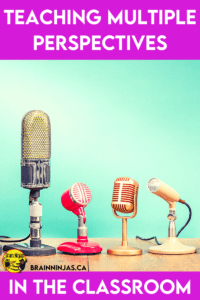
Once your students have raised their heads ask them these questions and have the discussion about what they thought of the activity (not the specifics of how they voted): Did you find it more difficult to make a decision the more you learned about the situation? Did you change your mind at any point?
Ask your students if their opinion would change if they were the storekeeper. the stealer? the sick person?
Explain that as people learn more information about an issue, they might change their minds. The ability to change your mind and accept that an issue is different than you originally thought is ok.
Normalize changing your mind based on new information. Teach the phrase, “Oh, I didn’t know that. Now that I do…”
Need a Specific Multiple Perspectives Lesson About Pipelines?
We wrote an entire lesson about whether or not pipelines are the best way to move oil from the oilsands. It is not a debate about whether or not people should be using fossil fuels. We’ve included many opinions from a variety of people involved in the issue along with facts.
You can find The Pipeline Perspective: Teaching Multiple Perspectives in our TpT Store ($USD) and BN Shop ($CAN).
If you are looking for some other ways to incorporate multiple perspectives into your lessons, you should check out some of our other social studies-related posts.
How to Bring Your Social Studies Lessons to Life
How to Get Your History Lessons Off Life Support
Connecting Social Studies and Art
We have a Project-Based Learning planning sheet, but we also use it to plan out activities that students will do from multiple perspectives. They can be found in our Resource Library, along with many other general classroom forms to help you organize your classroom, or we can send a copy to your inbox when you sign up for our mailing list.
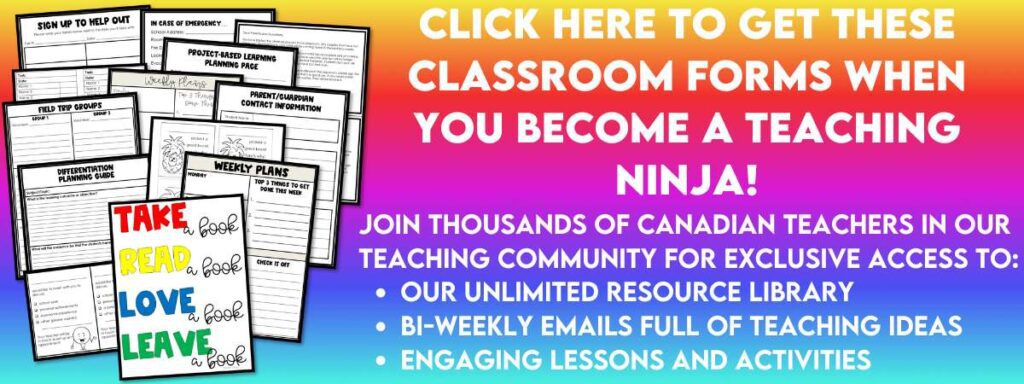
We’d love to hear about your experiences discussing polarizing issues with your students. How are you managing the current culture of differing sides? How do you keep your personal opinion out of the classroom? Please share with us in the comments below.






